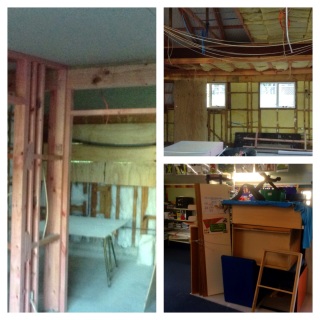
My ongoing personal inquiry is teachers and how they share their learning. I was really excited to join Arjana and Bart @abfromz @BartVerswijvel and six other global educators on Tuesday 26th of April for a global networking seminar as part of their programme for European teachers called The Networked Teacher. When Shelly opened the session, we had both Arjana and Bart on screen and I was reminded about our history of connections through the TeachMeetINT virtual sessions that we took part in a few years ago. Bart had this cow bell that he used as a timer. That bell was an awesome timekeeper and we tried hard not to hear it.
I shared parts of my ongoing personal inquiry but from my perspective of how I built my professional learning network. I was asked to focus on my New Zealand connections so was extra excited to share about our part of the world to European educators in the eTwinning programme. The hashtag they use is #etwion. The session took place at 5.00am in our New Zealand time zone. You can check out the hashtag and see what the attendees are learning.
I built the slides over a few days. An event like this allows me to reflect on where I am as a learner and from listening to other global educator stories inspires me to set new digital learning goals. I was interested in hearing their stories from their parts of the world. Happening in the chat window was a lot of questions. I am not the best at multitasking so quickly captured the questions asked of me so I could respond to them later. The ones that caught my attention involved teachers of heritage languages wanting to make contact with our Te Reo teachers. So I suggested contacting me via social media and I hope to help them make connections here. I learnt the splot trick from @MissSpeir. So sprinkled purple splots as hyperlinked breadcrumbs throughout my presentation.
I have to mention here how Arjana was an inspiration for the #TeachMeetNZ project which is where New Zealand teachers share their passions and learning in 3 minute video clips. In a way too she plays a part in #Edblognz because it was by tagging me in a #Meme that the list of New Zealand educator blogs was curated by @HelenOfTroy01. I took that over and expanded that to include all other New Zealand blogs which was then added to the #EdblogNZ curated site of New Zealand educator blogs which I now help curate with @nlouwrens and @ariaporo22.
Thank you Arjana and Bart for inviting me to share our New Zealand teachers learning. To Joe from Canada @Joe_Sheik, Fiona from South Africa @fibeal, Shelly from Texas, USA @ShellTerrell, Karina from Israel @karinam60, Marie-Leet from Belgium @BensBel, and Annamaria from Brazil @anamariacult, fabulous to meet you all. Hearing your stories was inspirational. To all the attendees of the webinair great to meet you all and I look forward to adding you on twitter.





 ‘A week in the life.’
‘A week in the life.’
.jpg/185125513/203x360/smith_(Medium).jpg)
.jpg/176697057/school4_(Medium).jpg)






